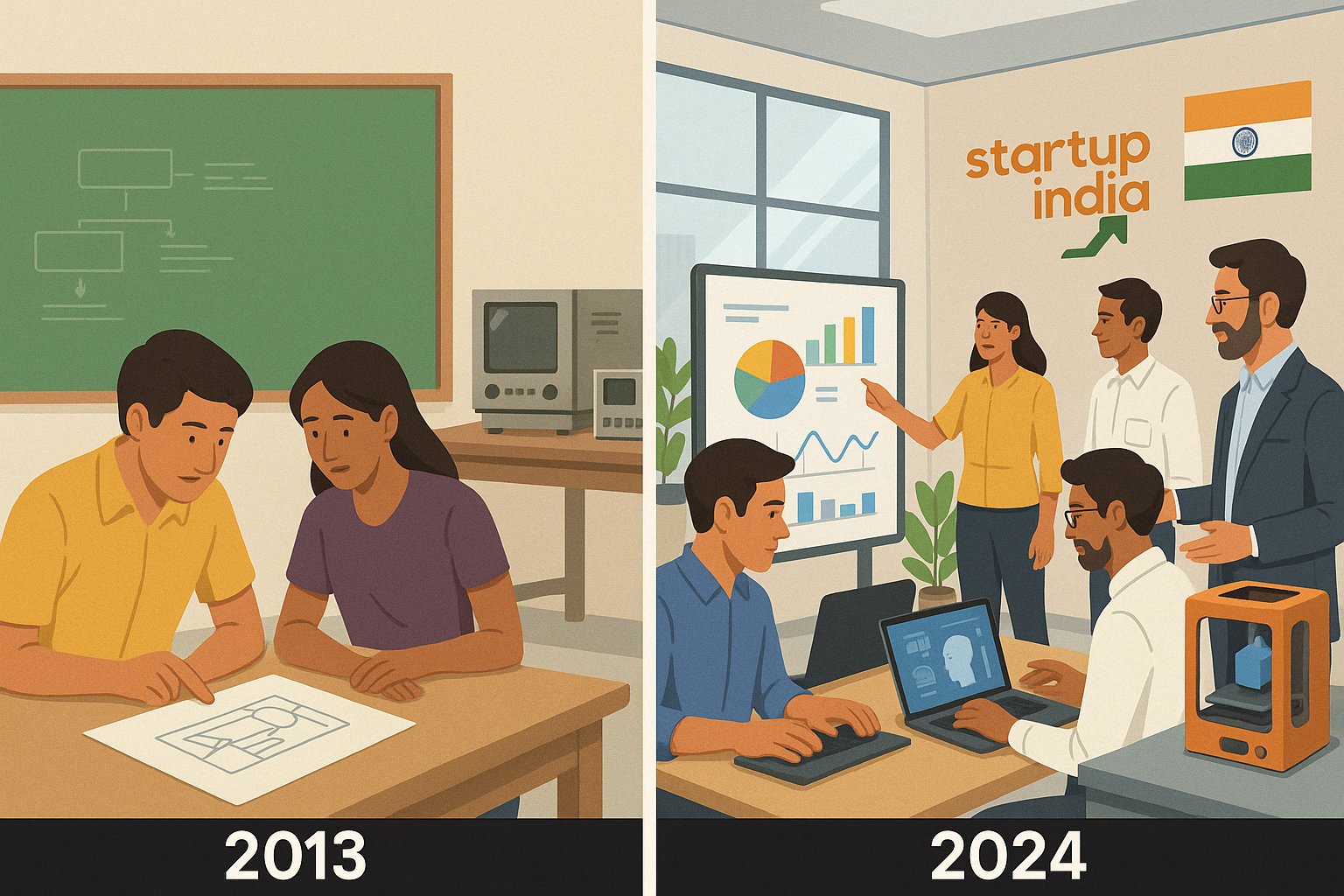In 2013, India’s startup landscape was just beginning to form. The idea of student-led or research-driven startups was rare outside top-tier institutions like IITs or IIMs. At that time:
- Only a few incubation centres existed.
- They primarily served academic innovation, not entrepreneurship.
- Most lacked structured mentorship, funding access, or industry connection.
The shift began gradually—and has accelerated in the last five years.
2015–2018: The Policy Push Era Begins
The game changed when the Government of India launched Startup India in 2016.
Key developments during this period:
- Startup India Action Plan created a formal framework for incubation support.
- Atal Innovation Mission (AIM) established Atal Incubation Centres (AICs) in educational institutions.
- MHRD Innovation Cell promoted Institution’s Innovation Councils (IICs).
- State-level missions like StartIn UP, T-Hub in Telangana, and Kerala Startup Mission gained momentum.
By 2018, over 250 institutional incubators were operational, mostly in metro cities.
ALSO READ; From Idea to Impact: The Rise of Startup Incubators in India
2018–2021: Scaling Beyond Metros
During this phase, focus shifted to spreading incubation to Tier-2 and Tier-3 cities.
Major milestones:
- University incubation policies were introduced under NEP 2020.
- Colleges and private universities began setting up DST, MSME, or AICTE-supported incubators.
- NIDHI PRAYAS and BIRAC BioNEST offered prototype and biotech support.
- NAAC/NIRF rankings began rewarding innovation infrastructure.
Incubators started helping startups move beyond ideation into prototyping and pilot launches.
ALSO READ: Institutional Incubation Centres vs Accelerators: What’s the Difference
2021–2024: From Incubators to Ecosystems
Post-pandemic, the role of incubators matured significantly.
New developments:
- Focus shifted from just physical space to end-to-end startup support.
- Incubators began offering legal, IP, branding, and digital growth services.
- Corporate CSR, alumni networks, and venture capital began integrating into incubation.
- Sector-focused incubators emerged—for agritech, AI, cyber forensics, clean energy, etc.
Examples:
- IIT-Madras Incubation Cell became a hub for deep-tech and mobility innovation.
- Banasthali Vidyapeeth’s incubator promoted rural women entrepreneurs in Rajasthan.
Institutional Incubators Today: What’s Changed?
Then (2013):
- Idea stage support only
- Mostly research-focused
- Minimal startup success stories
- Low awareness in students and faculty
Now (2025):
- Full-stack startup support (idea to MVP to market)
- Focus on business validation and funding readiness
- Faculty-led and student-led startups both nurtured
- National and state policies aligned to promote incubation
- Strong integration with VC networks, angel funds, and accelerators
How Incubators Have Expanded Their Impact
1. Driving Innovation in Education
- Entrepreneurship now part of curriculum in many colleges.
- Academic projects are converted into commercial startups.
- Incubators serve as learning labs for real-world business.
2. Job Creation and Skill Development
- Startups create employment locally, even in small cities.
- Students get internships, live projects, and placement alternatives.
- Incubators also run workshops on digital tools, pitching, and funding.
3. Inclusive Growth
- Women-led, rural, and social impact startups are gaining ground.
- Institutions focus on sustainable development goals (SDGs).
- Local problems like waste management, water conservation, and e-health are being addressed.
Challenges That Remain
Despite strong growth, challenges persist:
- Many incubators lack sectoral mentors and investor networks.
- Early-stage funding beyond Rs 10–15 lakh remains tough.
- Sustainability beyond government grants is still a concern.
- Quality and performance vary widely across institutions.



